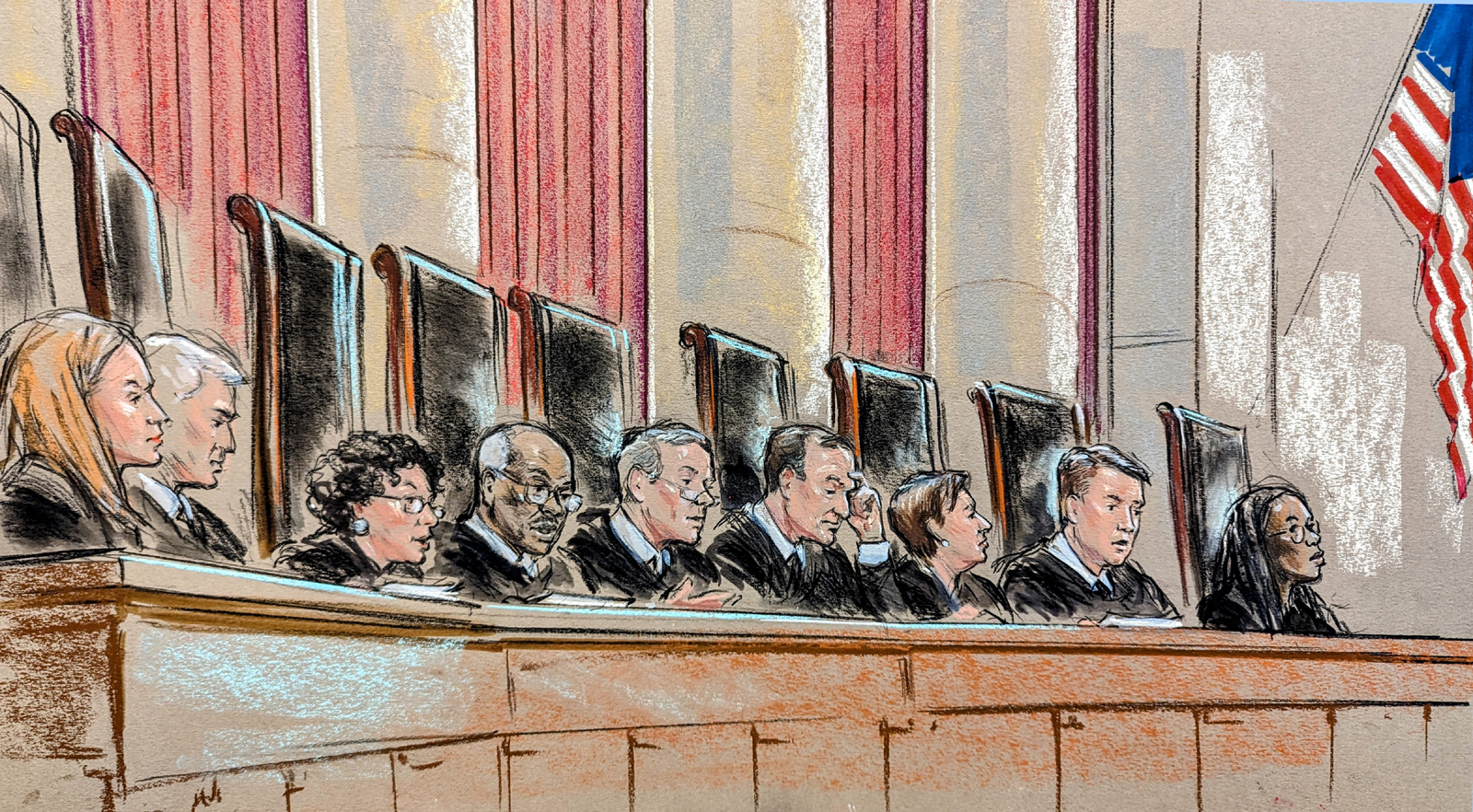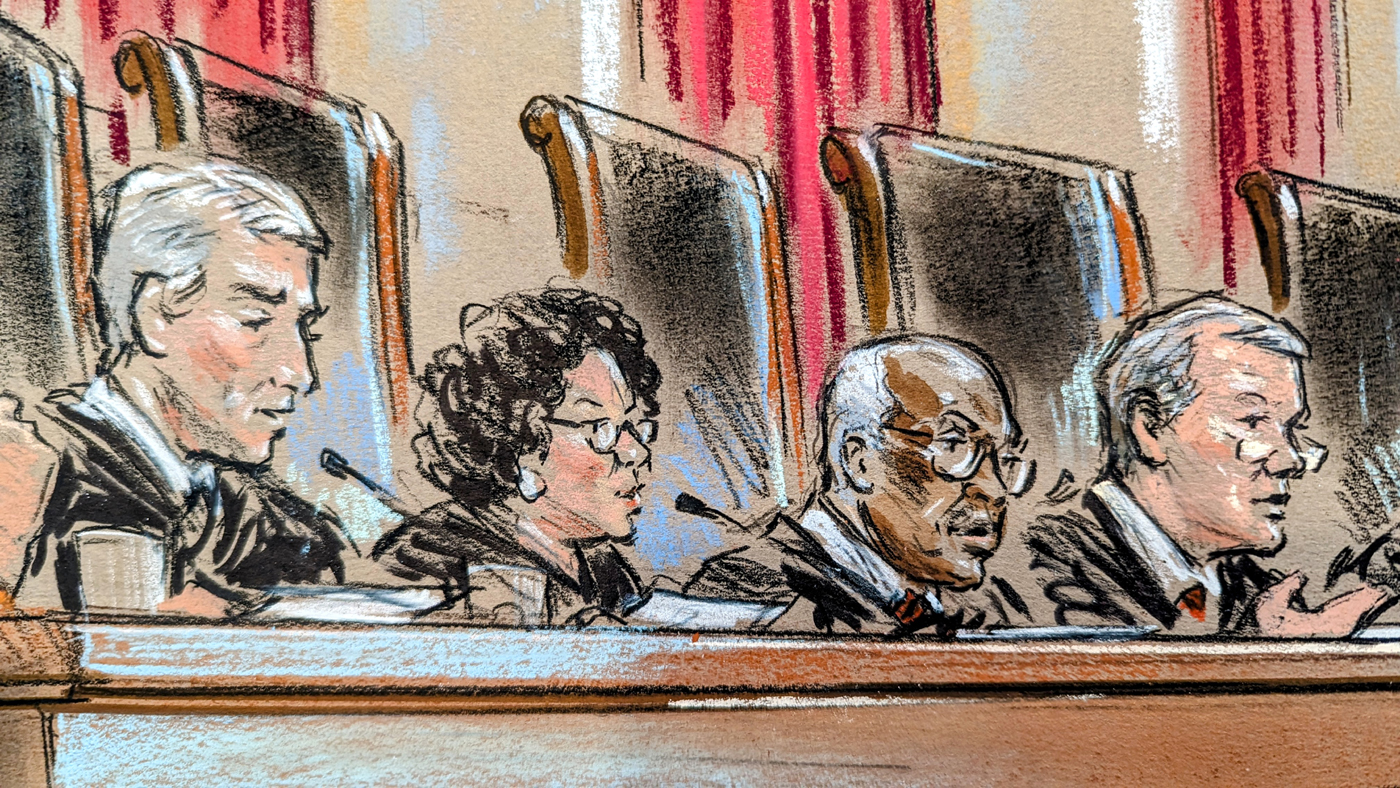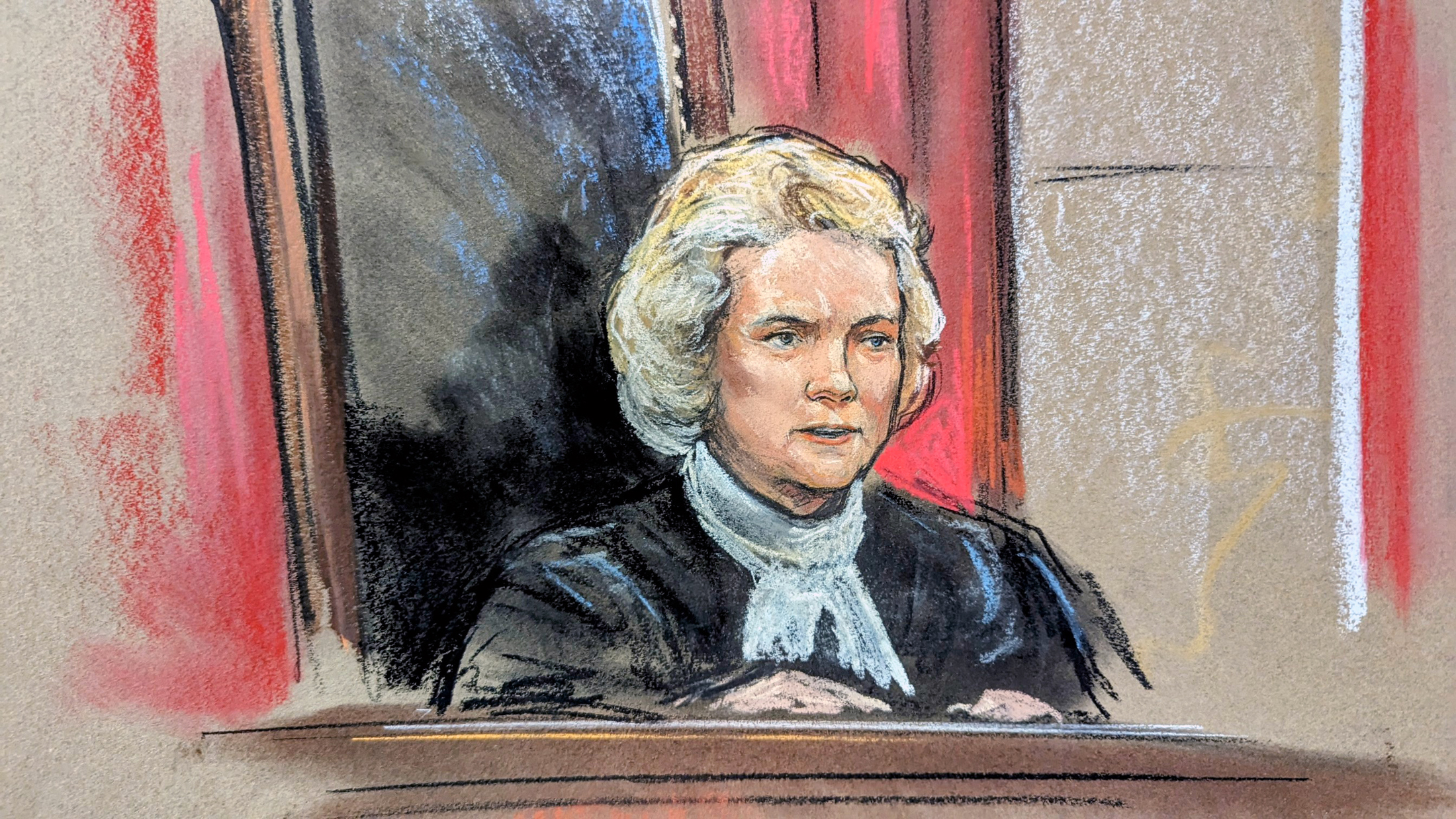Court expands government’s ability to deport noncitizens for offenses related to obstruction of justice
OPINION ANALYSIS
on Jun 24, 2023
at 5:08 pm
Justice Brett Kavanaugh delivers the opinion of the court in Pugin v. Garland. (William Hennessy)
Federal immigration law requires the deportation of noncitizens who are convicted of an aggravated felony, which includes offenses “relating to obstruction of justice.” By a vote of 6-3, the Supreme Court ruled on Thursday in Pugin v. Garland that an offense can relate to the obstruction of justice even if an investigation or proceeding is not pending. Justice Brett Kavanaugh wrote for the majority, in a decision joined by Chief Justice Roberts and Justices Clarence Thomas, Samuel Alito, Amy Coney Barrett, and Ketanji Brown Jackson. Justice Kavanaugh’s decision closely mirrored the arguments made by the Biden administration in its brief, including its point that obstruction of justice is “often ‘most effective’ when it prevents ‘an investigation or proceeding from commencing in the first place.’”
Justice Sotomayor dissented, in an opinion joined by Justices Neil Gorsuch and Elena Kagan.
The question came to the court in the cases of two men, Jean Francois Pugin and Fernando Cordero-Garcia, both permanent residents of the United States who had lived in the country for decades. Pugin pleaded guilty to being an accessory after the fact to a felony, while Cordero-Garcia was convicted of dissuading a witness from reporting a crime. Both men were then served with a notice of removal on the ground that they had each committed an aggravated felony, meaning an “offense relating to obstruction of justice” for which each was sentenced to at least one year.
Pugin and Cordero-Garcia were found deportable on that basis. They appealed those decisions on the ground that the elements of their underlying state convictions did not include a nexus to a pending investigation or proceeding, which they argued was required for the convictions to count as relating to obstruction of justice. In Cordero-Garcia’s case, the U.S. Court of Appeals for the 9th Circuit held that obstruction of justice required a connection to a pending investigation or proceeding, while the U.S. Court of Appeals for the 4th Circuit held in Pugin’s case that it did not.
In finding against Pugin and Cordero-Garcia, Kavanaugh’s opinion hinged on four rationales. The role of the court, he began, was not to craft a new federal obstruction of justice offense, “but rather to determine which state or federal offenses ‘relate to obstruction of justice.’” Kavanaugh noted that Congress defined the offenses in the immigration statute more broadly than the federal statute criminalizing obstruction of justice when it included the phrase “relating to” in the statute.
Next, he pointed to dictionary definitions, state statutes, and the Model Penal Code from 1996 – the year when Congress added this category of offenses to the aggravated felony list – for contemporaneous meanings of obstruction of justice.
Kavanaugh refuted Pugin and Cordero-Garcia’s argument that the broader reading of the offense was problematic because it creates redundancy within the immigration statute with other aggravated felonies. Such “redundancies are common in statutory drafting,” Kavanaugh wrote.
Finally, concluding that the statute’s meaning was unambiguous after applying traditional rules of statutory construction, Kavanaugh declined to apply the rule of lenity, which resolves any ambiguity in criminal or immigration statutes in favor of the criminal defendant or the noncitizen.
Ultimately, Kavanaugh contended that the definition of “relating to obstruction of justice” comes down to common sense because – harkening back to the government’s argument — justice can often be most effectively obstructed when an investigation or proceeding is not yet in view.
In her dissent, Sotomayor warned that the majority’s approach allows the government to argue that myriad low-level misdemeanors as aggravated felonies, including purchasing a fake ID or failing to report a crime.
Sotomayor asserted that throughout early and contemporary American laws, “interference with an ongoing investigation and proceeding [has been] at the ‘core’ of obstruction of justice.” She faulted the majority for missing what she called the “trunk” of obstruction of justice, by meandering through its various “branches or offshoots,” leaving the term with little shape and no limits.
Sotomayor reminded the majority that the first step to determine whether a state criminal statute is one of the enumerated aggravated felonies for purposes of deportation is defining the elements of the generic offense at issue, while excluding its “more unusual ‘nongeneric’ variants that are ‘defin[ed] … more broadly.’” Sotomayor explained that when Congress added “offenses relating to obstruction of justice” as an aggravated felony in 1996, obstruction of justice was already a term of art, with the court having twice — including just in the prior year — defined the federal crime of obstruction of justice to necessarily include a nexus to a pending proceeding.
Sotomayor contended that the majority’s dictionary definitions of “obstruction of justice” required at least a pending investigation. She also noted that most state laws defining the crime of obstruction of justice required a connection to a pending or reasonably foreseeable proceeding or investigation. Further, she wrote, the the Model Penal Code is not law but only an aspirational law reform project.
Sotomayor acknowledged the complexity of discerning the elements of generic obstruction of justice, “even if the Court claims it does not see it,” but she insisted that, in accordance with the rule of lenity, “any lingering ambiguities in deportation statutes [should be construed] in favor of the [non-U.S. citizen].”
In a concurring opinion, Justice Ketanji Brown Jackson offered an approach to define the contours of “offenses relating to obstruction of justice.” She pointed to the family of federal offenses grouped together in the U.S. Code under a chapter entitled “Obstruction of Justice.” The chapter, she noted, includes offenses that do not require a pending investigation or proceeding and, she suggested, those offenses could serve as a benchmark of Congress’s actual intent underlying the phrase “relating to obstruction of justice” in the immigration context. While Jackson’s approach did not carry the day, it offers some discernable limitation that future parties may use in litigation. But, for now, the majority’s decision in Pugin opens the door for the government to argue that an ever-expanding array of crimes warrant deportation.






